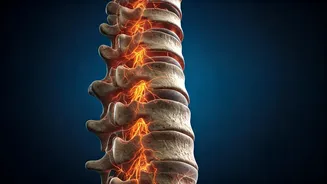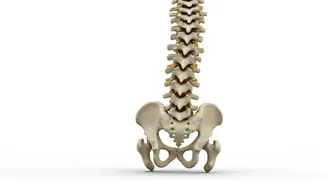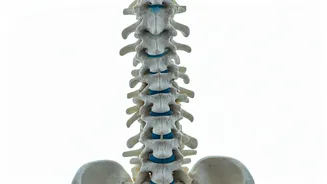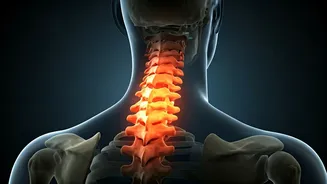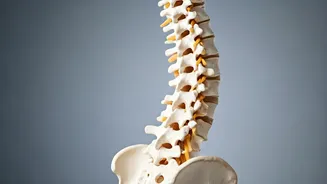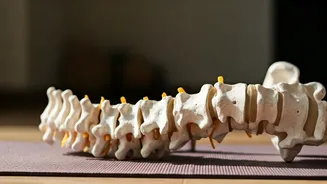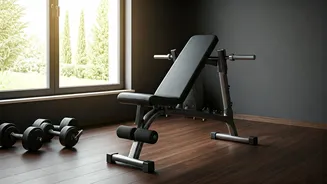Body Language Unveiled
The human body is an intricate communication system, consistently providing signals that often go unnoticed. Posture, the way we hold our bodies, serves
as a crucial component of this communication. It can offer a window into our emotional state, revealing underlying stress, discomfort, or even our general health. Recognizing and interpreting these signals provides an opportunity to enhance self-awareness and address potential issues. From how we sit to how we stand, each gesture carries a message. This awareness allows for proactive steps towards well-being. Different postures can suggest various things about a person's physical and mental state. For example, a person who is slouching might be feeling down or be in pain. On the other hand, someone standing upright with their shoulders back might convey confidence and alertness. In this exploration, we'll examine specific postures and their potential implications.
The Slouched Shoulders
Slouched shoulders are often an indicator of fatigue, stress, or a lack of confidence. This posture involves a rounding of the upper back and a forward slump of the shoulders. Individuals experiencing emotional distress or physical exhaustion often adopt this posture as a result of muscle tension or lowered energy levels. This posture compresses the chest cavity, which could impact breathing and could therefore cause feelings of anxiety or other emotional distress. Chronically slouched shoulders can lead to other physical problems like back pain or poor balance. Conversely, adopting a more upright posture can help improve mood and promote feelings of self-assurance. Correcting the posture involves consciously pulling the shoulders back and down, while also activating the core muscles to help improve posture. This simple adjustment could help alleviate stress and promote overall well-being. Regular exercise, especially activities that strengthen the back and core muscles, can also make a positive difference.
The Crossed Legs
Crossing the legs is a common posture that might seem innocuous at first glance; however, it can offer insight into a person's emotional state or level of comfort. This posture can create a physical barrier and signal a defensive stance, especially when paired with other closed-off body language like folded arms. It might be a sign of discomfort, skepticism, or a need for personal space in social situations. This behavior could also be a habit, as some individuals cross their legs purely for comfort. However, studies show that crossing the legs can impact blood pressure. Crossing legs for extended periods of time may constrict blood flow. While it might not be a definitive indicator of a person's feelings, understanding its potential implications can help in navigating social interactions more effectively. Awareness of leg-crossing patterns in oneself and others promotes a more nuanced understanding of non-verbal communication and can lead to improved relationships and interactions.
The Dangerous Posture
Certain postures can be physically detrimental over time, affecting spinal health and overall well-being. The most dangerous posture refers to one that puts excessive strain on the musculoskeletal system, contributing to chronic pain and potential long-term damage. This may include positions that misalign the spine, placing undue stress on the joints and ligaments. The most commonly cited dangerous postures include forward head posture (where the head juts forward, placing strain on the neck and upper back) and excessive slouching or hunching. It is also important to consider the prolonged sitting posture, which has a negative impact on overall health. Regularly checking and correcting such postures, together with regular exercise that strengthens core muscles, is essential. Also, it's beneficial to incorporate stretching to maintain flexibility. Understanding and mitigating the effects of such postures is crucial for preserving long-term physical health.
Forward Head Posture
Forward head posture is often characterized by the head positioned in front of the shoulders, which can place considerable strain on the neck muscles and spine. This posture typically occurs due to prolonged periods of looking down at phones or sitting at a computer. This can lead to headaches, neck pain, and even nerve compression over time. The strain forces the neck muscles to work harder, and it could also result in muscle imbalances. The shoulders could round, creating a cycle of further muscle strain and discomfort. Correcting this posture involves consciously bringing the head back over the shoulders, improving the workstation setup to promote good posture, and doing specific exercises to strengthen the neck and upper back muscles. Being aware of the posture, particularly in day-to-day activities, can contribute to managing and improving this common posture. Regular breaks and ergonomic adjustments can further mitigate the adverse effects.
The 'Freefall' Sleep
The 'freefall' or stomach sleep position, with arms often wrapped around a pillow, is another posture with implications for physical health. This position often involves twisting the neck, which puts pressure on the spine and could lead to neck pain, stiffness, or headaches. The strain can also restrict breathing and blood flow, leading to potential discomfort during sleep. It may also lead to problems in your lower back. While some people find this position comfortable, it is considered less desirable than sleeping on your back or side. For those who frequently sleep in this position, it is recommended to consider alternative sleeping positions. Using a supportive pillow and practicing exercises to strengthen the core could reduce the negative effects. Understanding how these factors impact overall health can improve your sleep and improve your overall well-being.
The Fetal Position
The fetal sleep position, characterized by curled-up legs and a tucked-in torso, is a very common posture. While this position is often considered comfortable and can promote feelings of security and relaxation, it may also lead to certain drawbacks. This position can restrict breathing or cause stiffness in the neck and back. It can also exacerbate existing spinal issues. For individuals with back problems, this position may intensify discomfort. However, for some, the fetal position offers a sense of safety and allows for deeper sleep. Modifying the position slightly, such as using a supportive pillow, could help. Being aware of these different aspects can contribute to a better understanding of sleep and ways to optimize the quality of sleep, supporting physical comfort and emotional wellness.
